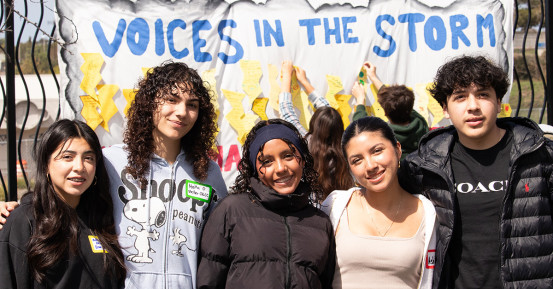Wildfires Have a Lasting Psychological Impact on Communities
Climate trauma is an emerging challenge.
Published Date
Story by:
Topics covered:
Share This:
Article Content
This article originally appeared in the spring 2024 issue of UC San Diego Magazine as “After the Fire.”
“Natural disasters have always been part of human history, but the frequency and intensity of natural disasters have been accelerated by climate change, and in the wake of that, we’re finding exaggerated mental health symptoms,” says Jyoti Mishra, PhD ’08, MBA ’22, associate professor in the Department of Psychiatry at UC San Diego School of Medicine.
Climate trauma is an emerging challenge. It is already well-documented that extreme climate events result in significant psychological impacts. Warming temperatures, for example, have even been linked to greater suicide rates. As planetary warming amplifies, more forest fires are expected in California and globally, with significant implications for mental health effects.
Mishra and colleagues from California State University, Chico studied the mental health impacts of the 2018 Camp Fire, California’s deadliest and most destructive fire to date. They found that direct exposure to large-scale fires significantly increases people’s risk for mental health disorders, particularly post-traumatic stress disorder (PTSD) and depression. Further, even witnessing such a disaster within one’s community can significantly affect people.
By quantifying the mental health impacts of large-scale disasters, the climate trauma experienced by a community can be better understood.
Using electroencephalography, the research revealed increased activity in the regions of the brain involved in cognitive control and interference processing, or the ability to cope with unwanted and often disturbing thoughts.
“To function well day to day, our brains need to process information and manage memories in ways that help achieve goals while ignoring or dispensing with irrelevant or harmful distractions,” says Mishra.
PTSD was three times more prevalent in populations exposed to the fire than in the nonexposed, general population. “We see a very hyperaroused brain system, which tends to happen when one feels like they’re in constant threat mode,” she says. “In this traumatic state, it makes it very difficult to go about day-to-day things in an attentive and focused way.”
“We’re still observing these brain responses six months to a year after the wildfires, which means there are longer-term impacts on this population,” she says.
While FEMA and other organizations serve the physical needs of those affected by natural disasters, Mishra and her colleagues are working with community partners on ways to help build mental health resilience in impacted areas.
The aim of interventions, including eco-mindfulness therapeutics, environmental stewardship and environmental restoration, is to help individuals restore a positive emotional connection with the environments where they live.
This article originally appeared in the spring 2024 issue of UC San Diego Magazine as “After the Fire.”
Learn more about research and education at UC San Diego in: Climate Change
You May Also Like
Stay in the Know
Keep up with all the latest from UC San Diego. Subscribe to the newsletter today.





